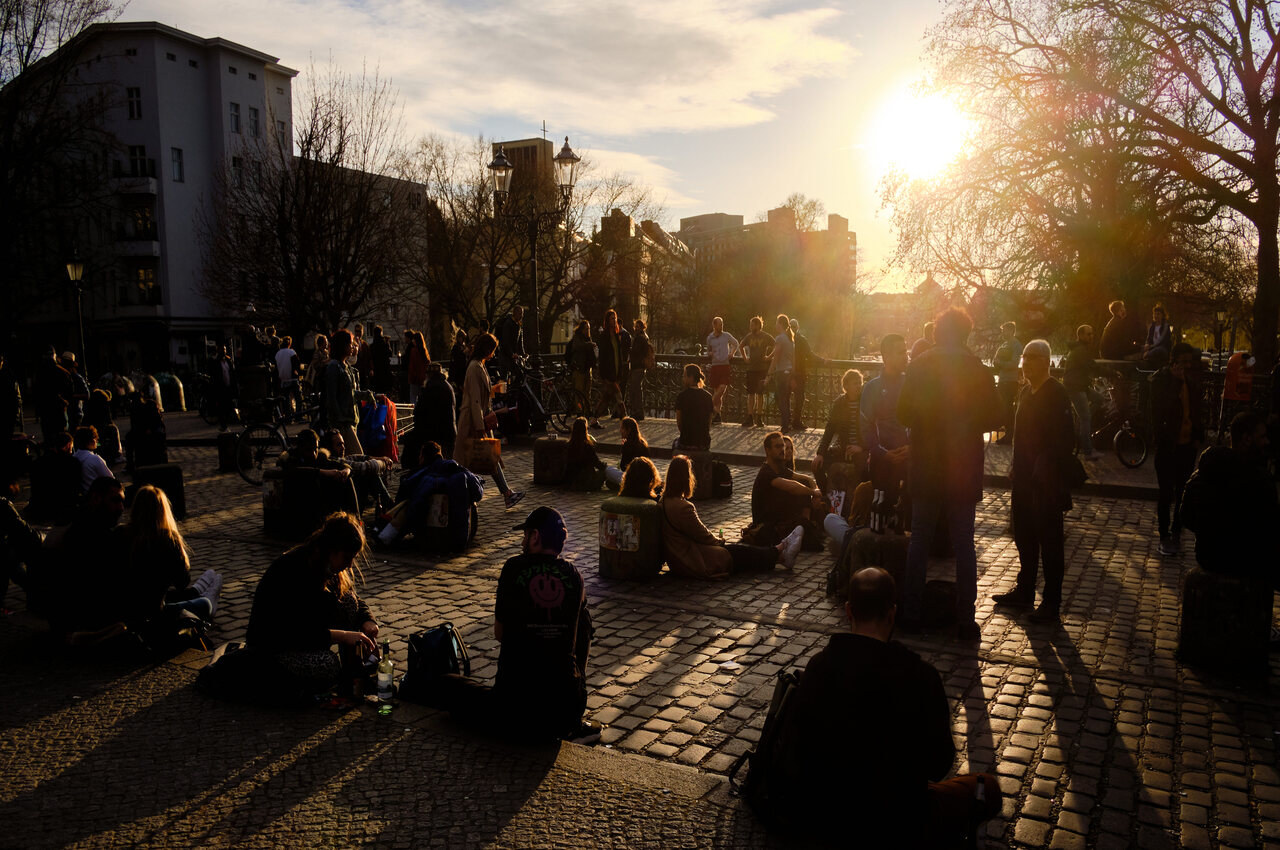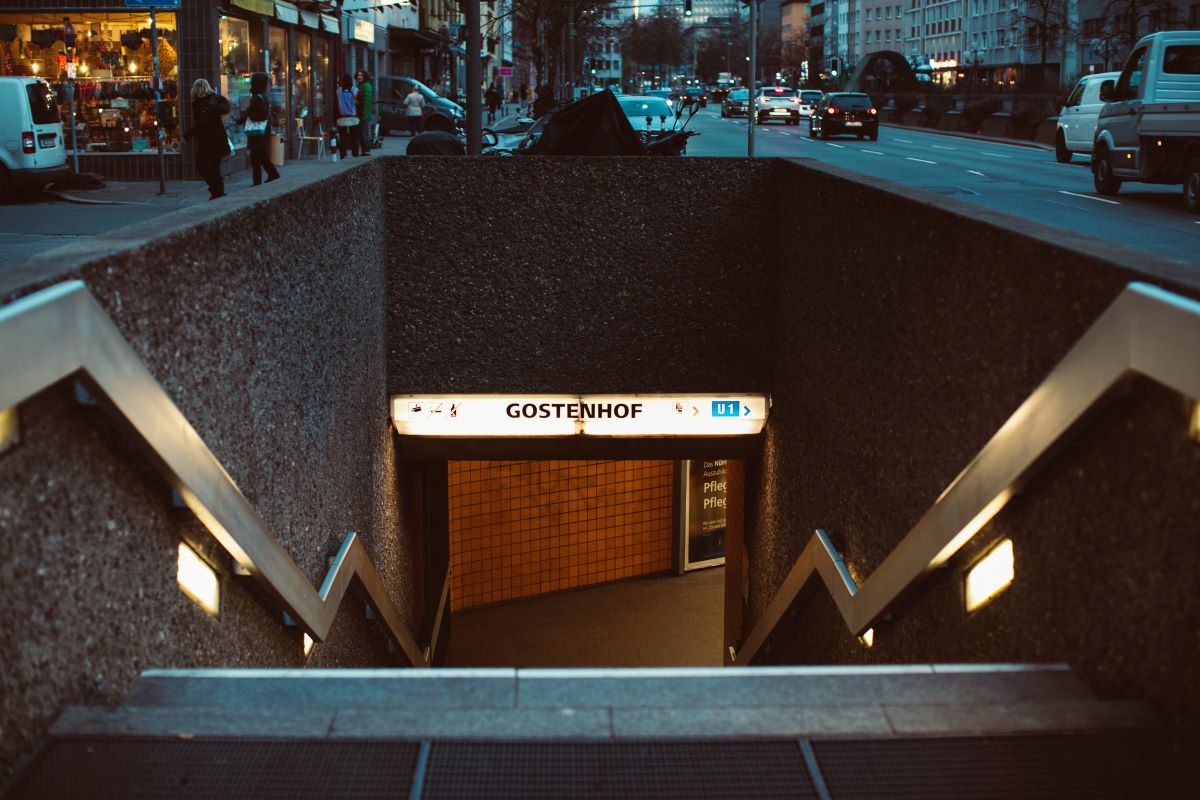Kreuzberg or Mitte? St. Pauli or Altona? Schwabing or Maxvorstadt? A data-driven study of the trendiest neighbourhoods in Germany’s cities claims to have the answer.
When it comes to defining what makes a neighbourhood “trendy” or “cool” opinions vary.
Is it the nightlife, the range of restaurants, the presence of creative spaces, or simply the overall vibe you feel while walking its streets?
A new study by travel group TUI attempts to answer this subjective question with data.
TUI’s Szenenviertel study – Szenenviertal can be translated variously as “cool quarter” or “trendy neighbourhood” – surveyed 50 districts across major cities in Germany.
The ranking was based on various factors including the number of vegan restaurants, the number of yoga and Pilates studios, rent prices, social media activity (e.g. number of TikTok hashtags), the number of bars and cafés and even the average price for a matcha latte and an espresso martini.
Each category was evaluated and combined into an overall score.
Here are the top ranked “trendiest” neighbourhoods in each of the ten German cities which appear highest on TUI’s list.
You can find the full list here.
Berlin – Kreuzberg (top in Berlin, first overall)
Topping the list is Berlin’s Kreuzberg, often considered the creative pulse of the capital. It leads in social media presence with over 39,000 TikTok hashtags, reflecting its global fame for street art, food innovation and cultural diversity.
Beyond the digital, Kreuzberg boasts an impressive density of more than ten yoga and Pilates studios per 10,000 residents, alongside a thriving bar scene.
READ ALSO: The top-rated cocktail bars in Germany
But the essence of Kreuzberg’s cool appears to come from its rebellious subculture: self-managed cultural venues, vibrant clubs, and a mosaic of traditional and migrant eateries.

People sit on the Admiralbrücke in Berlin’s Kreuzberg district, reportedly the trendiest neighbourhood in Germany. Photo: picture alliance/dpa | Stefan Jaitner
Hamburg – St. Pauli (top in Hamburg, third overall)
Hamburg’s St. Pauli claims third place overall (behind Mitte in Berlin), living up to its reputation as the city’s wild heart and steadfast champion of alternative culture.
With a staggering 105 bars per 10,000 inhabitants, many of them in the famous Reeperbahn, it’s also the epicentre of nightlife in the city.
READ ALSO: Yes you can make local friends in Hamburg, here’s how
Advertisement
Leipzig – Plagwitz (fifth overall)
Old industrial buildings in Leipzig’s Plagwitz neighbourhood have been reborn as hubs for creativity and innovation, blending old-town charm with modern flair and putting this district in the top five.
Repurposed factory halls now house galleries, co-working spaces, and studios. The area also scores highly for its affordable matcha lattes and espresso martinis (average price €9.33 – the cheapest on our list).
Cologne – Belgisches Viertel (seventh overall)
Cologne’s Belgian Quarter has the highest number of yoga and Pilates studios on the list (18.7 for every 10,000 residents) and a flourishing vegan restaurant scene.
Its colourful streets offer everything from stylish bars to niche boutiques, making it a hotspot for both locals and tourists seeking a hip city experience.
Advertisement
Munich – Maxvorstadt (tenth overall)
Munich’s Maxvorstadt stands out for its combination of university life, cultural richness, and urban style.
The neighbourhood has seen a remarkable 173 percent increase in online searches recently, reflecting its rising prominence.
Maxvorstadt stands out for it cafés, galleries, a solid mix of heritage and contemporary attractions – and the most expensive average price for a matcha latte on the list (€5.63).
READ ALSO: Why Munich and Berlin are among the world’s best cities for students
Bremen – Schnoorviertel (11th overall)
Bremen’s Schnoorviertel is the smallest district on the list. Known for its narrow, winding streets lined with historic half-timbered houses, Schnoorviertel has secured a top spot thanks to its rapidly growing popularity online, with an 83 percent increase in Google searches.
The area also has the highest number of bars per capita on our list, as well as plenty of cosy cafés, artisan shops and art galleries.
Nuremberg – Gostenhof (16th overall)
Nuremberg’s Gostenhof is noted for its burgeoning arts scene, vibrant street art, and a mix of quirky bars and independent eateries. The district stands out for its dynamic creativity, with numerous galleries and cultural initiatives fostering a sense of community and innovation.
With a growing number of vegan restaurants and increasing social media buzz, Gostenhof reflects the city’s modern, forward-thinking spirit while respecting its historic roots.

The district of Gostenhof has been ranked as Nuremberg’s trendiest. Photo by Markus Spiske on Unsplash
Hannover – Linden (18th overall)
Linden, in Hannover, distinguishes itself by its lively cultural scene and strong local identity. The area features a rich variety of bars, cafés, and grassroots cultural venues which contribute to its reputation as a creative hub.
Yoga and Pilates studios, alongside vegan-friendly dining options, underscore a health-conscious and sustainable lifestyle trend that resonates with the district’s increasingly young population.
READ ALSO: The most popular youth slang words in Germany this year
Düsseldorf – Flingern (20th overall)
Düsseldorf’s Flingern is celebrated for its artistic flair and bohemian atmosphere.
Regular flea markets, creative workshops, and a diverse gastronomy scene make Flingern a magnet for artists, students, and young professionals alike.
The neighbourhood has gained traction on social media, helping to propel it into the top tiers of Germany’s trendy districts, along with its relative affordability.
Advertisement
Stuttgart – Heusteigviertel (25th overall)
Rounding out the list is Stuttgart’s Heusteigviertel, known for its blend of historic charm and contemporary culture.
The district’s independent shops, cafés, cultural venues and community events foster a sense of belonging, making it a welcoming space for residents and visitors seeking something a little less commercial.
What do you think? Do these neighbourhoods represent Germany’s coolest or trendiest? Share your thoughts, and tell us about your favourite neighbourhoods in the comments below.
Disclaimer : This story is auto aggregated by a computer programme and has not been created or edited by DOWNTHENEWS. Publisher: thelocal.de





